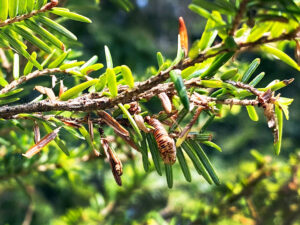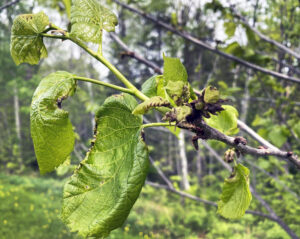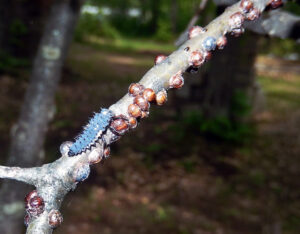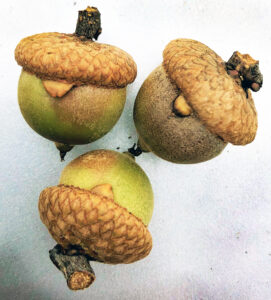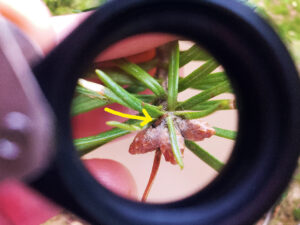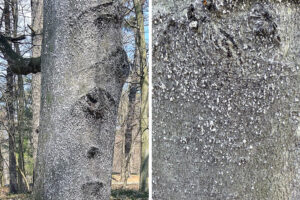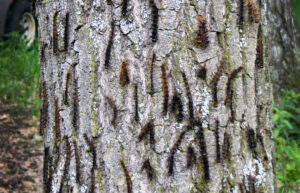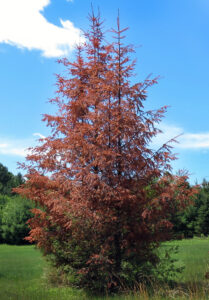
Scattered balsam fir trees in the Northwoods have suddenly turned brown and red this spring. Photo Credit: Linda Williams, Wisconsin DNR
By Linda Williams, DNR Forest Health Specialist, Woodruff; Linda.Williams@wisconsin.gov or 920-360-0665
Scattered balsam fir trees in some areas of northern Wisconsin have suddenly turned a rusty red or brown color and are dying. These trees are not being impacted by spruce budworm and typically die with a full complement of needles.
These symptoms are similar to those observed in 2018 and 2020. So far, the number of impacted trees reported is smaller than what was seen in 2018 or 2020. While reports of affected trees are still coming in, they seem to be concentrated in northern areas of the state that experienced extensive snowfall in late winter.
Continue reading “Balsam Fir Mortality Similar To 2018 And 2020”

